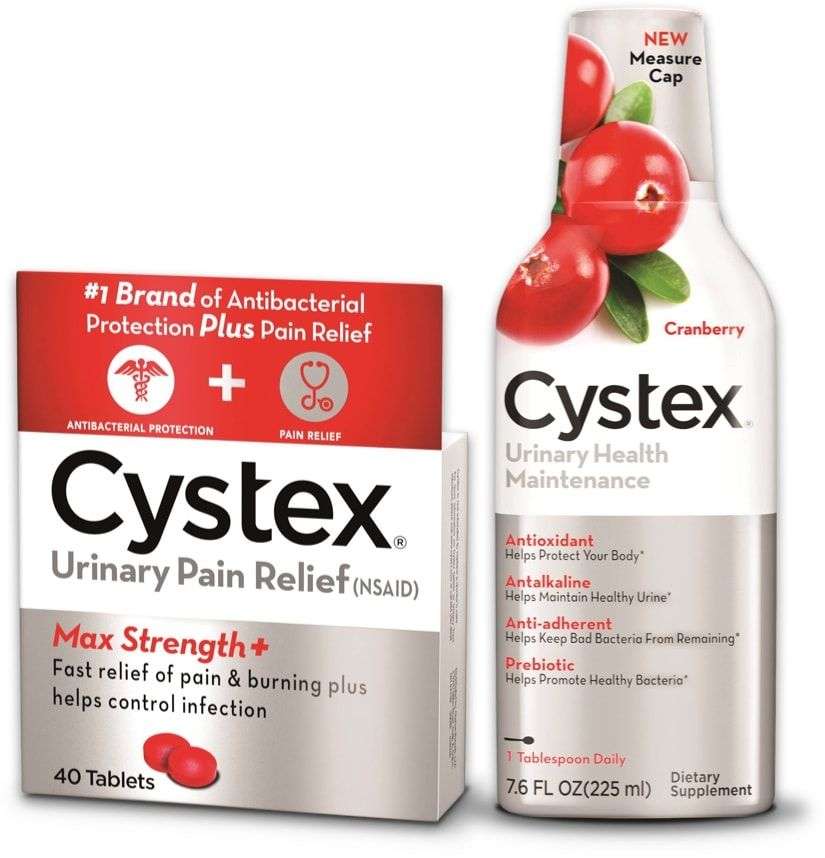Medications For Treating Incontinence
There are several medications used to treat incontinence. The main types of incontinence that respond to drug treatment are stress and urge incontinence.
Some of the medication used for stress incontinence include:
- Oestrogens are used to re-vitalise the urethral tissue structures enabling a better seal or closure.
- Alpha-adrenergic agonists. These drugs are used to contract the muscles around the bladder neck and urethra. This forms a tighter seal that keeps urine from leaking under pressure.
The medications used for urge incontinence or over-active bladder syndrome include:
All of these drugs should be used in conjunction with bladder training and pelvic floor exercises. The combination of these techniques provides the best option for managing the bladder spasms that cause urge incontinence and strengthening urethral resistance in stress incontinence. Each of these incontinence medications affects people differently. You should consult your doctor to determine the best treatment for you.
* International not-for-profit organisation preparing, maintaining and promoting the accessibility of systematic reviews of the effects of health care.
Kimberly-Clark Australia makes no warranties or representations regarding the completeness or accuracy of the information. This information should be used only as a guide and should not be relied upon as a substitute for professional medical or other health professional advice.
Other urinary incontinence causes
Surgical Treatments For Incontinence
Currently there are several different surgical options for incontinence. However, these treatments are often only recommended if medication and behavioral modifications have not been effective. Different procedures are used for women and men.
The most common surgical treatments for incontinence in women are:
- Retropubic Suspension: If the bladder falls out of place due to a weakening of the vaginal wall, this procedure can be used to situate the bladder back in the correct position. One or more incisions are made in the lower part of the abdomen. Surgical instruments are inserted through the cut, allowing for the bladder, part of the vaginal wall, and the urethra to be sutured to the pelvic bones and ligaments. This raises the urethra and the bladder.
- Pubovaingal Fascial Sling: In this procedure, a material known as fascia is placed around the neck of the bladder to stop urine from involuntarily leaking.
- Suburethral Sling: This procedure involves placing a sling under the urethra to support the neck of the bladder and prevent leakage.
- Tension-Free Vaginal Tape : TVT is a mesh that is placed around the neck of the urethra to provide additional support and stop urine from leaking.
The most common surgical treatments for incontinence in men are:
- Male Sling: The male sling involves placing a strip of material underneath the urethra to stop the urethra from opening involuntarily.
Do The Right Exercises
High-impact exercise and sit-ups put pressure on your pelvic floor muscles and can increase leaks.
To strengthen your pelvic floor to relieve symptoms, replace high-impact exercise, such as jogging and aerobics, with strengthening exercise, such as pilates.
Pilates strengthens your core muscles, which is beneficial for stress incontinence.
You May Like: Side Effects Of Bladder Cancer Chemotherapy
Mixing Oxybutynin With Herbal Remedies And Supplements
There’s very little information about taking oxybutynin with herbal remedies and supplements. These remedies are not tested in the same way as medicines.
Some herbal medicines can make you feel sleepy, cause a dry mouth, or make it difficult to pee. Their effect is similar to oxybutynin. This can increase your risk of getting side effects or make your side effects worse.
How Soon After Starting Kegel Exercises Will Urinary Incontinence Get Better

It may take 4 to 6 weeks before you notice any improvement in your symptoms.10
Kegel exercises work differently for each person. Your symptoms may go away totally, you may notice an improvement in your symptoms but still have some leakage, or you may not see any improvement at all. But even if your symptoms dont get better, Kegel exercises can help prevent your incontinence from getting worse.
You may need to continue doing Kegel exercises for the rest of your life. Even if your symptoms improve, urinary incontinence can come back if you stop doing the exercises.
Also Check: My Bladder Is Full But I Cant Pee
Why Is Urinary Incontinence A Health Issue
Urinary incontinence is a very common problem in aging women . When women leak urine during exercise, sneezing, or coughing, doctors call this type of incontinence stress-related . When women have strong urges to urinate and have trouble holding urine until getting to the bathroom, they may have what is known as urgency incontinence . Although most women have one or the other type of incontinence, older women often have both types. Incontinence hurts women’s self-confidence, interferes with their ability to enjoy their favorite activities, and decreases the quality of their lives .
When Should I See A Doctor About Incontinence
Its important to know that incontinence can be treated. Many people believe that its something that just goes along with aging and is an unavoidable issue. If you find that incontinence is disturbing your daily activities and causing you to miss out on things you typically enjoy, talk to your healthcare provider. There are a wide range of options to treat incontinence.
Don’t Miss: How Do Bladder Infections Happen
What Other Information Should I Know
Keep all appointments with your doctor.
Do not let anyone else use your medication. Ask your pharmacist any questions you have about refilling your prescription.
It is important for you to keep a written list of all of the prescription and nonprescription medicines you are taking, as well as any products such as vitamins, minerals, or other dietary supplements. You should bring this list with you each time you visit a doctor or if you are admitted to a hospital. It is also important information to carry with you in case of emergencies.
How Is Incontinence Diagnosed
Often, the diagnosis process for incontinence will start with a conversation with your healthcare provider about your medical history and bladder control issues. Your provider might ask you questions like:
- How often do you urinate?
- Do you leak urine between trips to the toilet, how often does this happen and how much urine do you leak each time?
- How long have you been experiencing incontinence?
These questions can help your provider figure out a pattern with your leakage, which often points to a specific type of incontinence. When your provider is asking about your medical history, its important to list all of your medications because some medications can cause incontinence. Your provider will also ask about any past pregnancies and the details around each delivery.
There are also several specific tests that your provider might do to diagnose incontinence, including:
While at home, your provider might recommend you keep track of any leakage in a journal for a few days. By writing down how often you experience incontinence issues over the span of a few days, your provider might be able to identify a pattern. This can really help in the diagnosis process. Make sure to write down how often you need to urinate, how much you are able to go each time, if you leak between trips to the bathroom and any activities you might be doing when you leak urine. Youll then bring this journal with you to your appointment and talk about it with your provider.
Read Also: Bladder Infection Symptoms No Infection
Urinary Incontinence In Older Adults
Urinary incontinence means a person leaks urine by accident. While it may happen to anyone, urinary incontinence is more common in older people, especially women. Incontinence can often be cured or controlled. Talk to your healthcare provider about what you can do.
What happens in the body to cause bladder control problems? The body stores urine in the bladder. During urination, muscles in the bladder tighten to move urine into a tube called the urethra. At the same time, the muscles around the urethra relax and let the urine pass out of the body. When the muscles in and around the bladder dont work the way they should, urine can leak. Incontinence typically occurs if the muscles relax without warning.
What Are The Symptoms Of Bladder Control Problems
Signs and symptoms of urinary incontinence can include
- leaking urine during everyday activities, such as lifting, bending, coughing, or exercising
- being unable to hold in urine after feeling a sudden, strong urge to urinate
- leaking urine without any warning or urge
- being unable to reach a toilet in time
- wetting your bed during sleep
- leaking during sexual activity
Also Check: Bladder Infection And Lower Back Pain
Beta Agonists For Bladder Problems
This class of medication, mirabegron , works by relaxing the bladder muscle during the storage phase, thus increasing the capacity of bladder to hold more urine. They can be used for the treatment of overactive bladder . Mirabegron is the first drug in this category.
- How beta-agonist drugs work: They work by relaxing the bladder muscles and reducing bladder overactivity.
- Who should not use this medication: Individuals with the following conditions should not use mirabegron or a similar class of drugs:
- Allergy to this drug
- Advanced kidney disease
Leaking Urine: Why It Happens And How To Treat It

Maybe a little bit of pee squeaked out when you sneezed. Maybe it happened on your runand this time, your shorts are kind of wet. Or maybe you have the sudden urge to go and don’t quite make it to the toilet on time.
Leaking urine happens. In fact, more than 25 million people in the US experience urine leakage every day, according to the National Association for Continence . This loss of bladder control is known as urinary incontinence. Here’s what you need to know about the conditionand how to get help.
Read Also: Can Bladder Cancer Be Seen On Ultrasound
How Do I Do Kegel Exercises
Kegel exercises are a simple way to build strength in your pelvic floor muscles. These exercises are done by lifting, holding and then relaxing your pelvic floor muscles. You can find these muscles by stopping the flow of urine mid-stream while youre urinating. Only do this until you learn how to find the muscles stopping the flow of urine mid-stream isnt healthy over a long period of time.
When youre doing Kegel exercises, start small. Only hold it for a few second. Over time you can slowly work your way up to longer and longer stretches of holding the muscles tight.
Unlike other types of workouts, no one can tell when youre doing Kegel exercises. Aim to do several sets of Kegel exercises twice a day.
Medicine For Stress Incontinence
If stress incontinence does not significantly improve with lifestyle changes or exercises, surgery will usually be recommended as the next step.
However, if you’re unsuitable for surgery or want to avoid an operation, you may benefit from an antidepressant medicine called duloxetine. This can help increase the muscle tone of the urethra, to help keep it closed.
You’ll need to take duloxetine tablets twice a day and will be assessed after 2 to 4 weeks to see if the medicine is beneficial or causing any side effects.
Possible side effects of duloxetine can include:
- nausea
- constipation
Do not suddenly stop taking duloxetine, as this can also cause unpleasant side effects. A GP will reduce your dose gradually.
Duloxetine is not suitable for everyone, however, so a GP will discuss any other medical conditions you have to determine if you can take it.
Recommended Reading: How To Help Bladder Control
Cholinergic Drugs For Bladder Problems
This class of drugs includes bethanechol . Cholinergic refers to nerve cells or fibers that use a certain type of chemical to send signals within the body. Cholinergic drugs are used when the bladder is not emptied completely following urination. This problem is known as residual urine in the bladder.
- How cholinergic drugs work: These drugs contract the bladder, thus allowing complete emptying.
- Who should not use these medications: Individuals with the following conditions should not use cholinergic drugs:
- Parkinson’s disease
- Bladder or bowel obstruction
Who Gets Incontinence
Incontinence can happen to anyone. However, its more common in certain groups and at certain times in your life. Incontinence is much more common in women than in men. This is often related to pregnancy, childbirth and menopause. Each of these experiences can cause a womans pelvic support muscles to weaken over time.
Youre also more likely to experience incontinence as you get older. The muscles that support your pelvic organs can become weaker over time, causing you to experience leakage issues.
Don’t Miss: Apple Cider Vinegar And Bladder Infection
How To Take Liquid
If you are giving this medicine to a child to help stop them wetting the bed, give the last dose just before bedtime.
Oxybutynin liquid will come with a plastic syringe or spoon to help you measure out the right dose. If you do not have one, ask your pharmacist for one. Do not use a kitchen teaspoon as it will not give the right amount of medicine.
How Do You Strengthen Your Bladder
To do Kegel exercises:
Also Check: How To Treat A Leaky Bladder
Who Cannot Take Medicines For Urinary Urgency And Incontinence
In general, most people are able to take these medicines however, there are some people who are unable to take these medicines.
Duloxetine should not be taken by people who have severe kidney or liver problems, uncontrolled high blood pressure, or are taking certain medicines – for example, antidepressants called monoamine-oxidase inhibitors.
Antimuscarinics should not be taken by people with:
- Myasthenia gravis. This is a condition where muscles become easily tired and weak.
- Severe bladder problems or urinary retention .
- Severe inflammation of the gut .
- Blockage of the gut.
- A condition of the eye, known as uncontrolled angle-closure glaucoma.
For a full list of people who cannot take these medicines, see the leaflet that came with your medicines.
Common Questions About Mirabegron

Mirabegron is a type of medicine called a beta-3-adrenergic-receptor agonist.
It works by relaxing the muscles around your bladder. This increases the amount of pee that your bladder can hold and reduces your need to pee as frequently or as urgently.
Mirabegron starts to work after about 3 to 4 hours to relax the muscle surrounding your bladder.
However, it can take up to 4 to 8 weeks for you to notice any improvements in your symptoms.
Usually, treatment with mirabegron is long term.
However, if you no longer have bladder problems, your doctor will advise you to stop taking mirabegron.
Mirabegron is generally safe to take long term, as long as you’re not bothered by side effects.
Many people take it for several months or even years without any problems.
It is safe to take mirabegron with everyday painkillers like paracetamol and ibuprofen.
Do not stop taking mirabegron without talking to your doctor first.
If you stop taking this medicine, it will take about 10 days for it to be completely out of your body.
Your symptoms of overactive bladder may come back or get worse.
Mirabegron is not usually the first choice of treatment for an overactive bladder.
Your doctor will usually try you on a type of medicine called an antimuscarinic first.
Antimuscarinics include:
There’s no clear evidence to suggest that taking mirabegron will reduce fertility in men or women.
Yes, you can usually drive or cycle while taking mirabegron.
You May Like: I Feel A Lot Of Pressure On My Bladder
Common Questions About Oxybutynin
Oxybutynin is a type of medicine called an antimuscarinic muscle relaxant.
It works by relaxing the muscle that is found in the wall of the bladder. This helps to increase the volume of pee your bladder can hold and control the release of pee.
Oxybutynin starts to work after about 3 to 4 hours to relax the muscle surrounding your bladder.
However it may take up to 4 weeks before it works fully.
If your symptoms do not start to get better after 7 days talk to your doctor.
Talk to your doctor if your symptoms get worse at any time.
Usually, you’ll need to take oxybutynin for a long time.
After 4 weeks your doctor will check that oxybutynin is helping your symptoms. They’ll also do a review every 6 to 12 months after that to check it’s still working for you.
Take oxybutynin until your doctor tells you to stop. Do not stop taking it just because you feel better.
There may be an increased risk of confusion and possibly dementia in people taking oxybutynin, but more study needs to be done. If you’re worried about this, talk to your doctor.
Do not take oxybutynin for longer than you need to. Your doctor will check every 6 to 12 months that your treatment is still needed.
It’s safe to take oxybutynin with everyday painkillers like paracetamol and ibuprofen.
If you’ve been taking oxybutynin for at least 6 months your doctor may suggest that you stop taking the medicine for up to 4 weeks to see how your symptoms change without it.